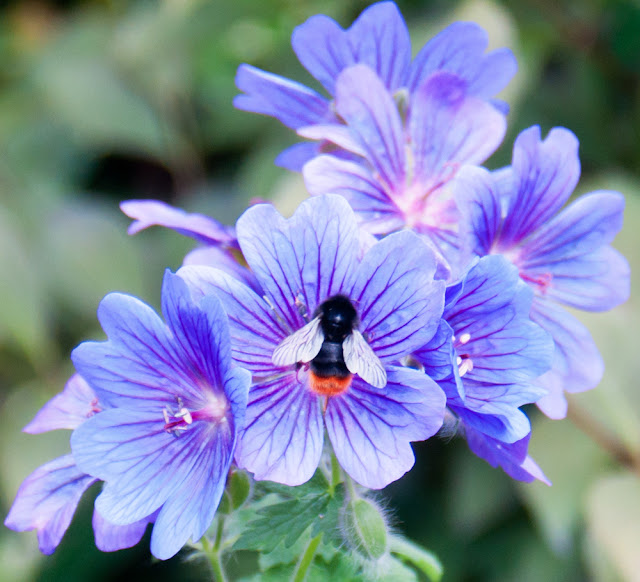I think this little lady is a Tree Bumblebee (Bombus hypnorum) which is a new species that arrived in the UK in 2001, but we aren't to worry because it is not affecting native bees.
 |
| Distribution of tree bumblees. Green spot shows first sighting in 2001. |
This bee is (and don't quote me, but I think it is a fair bet) a red-tailed bumble bee (Bombus lapidarius).
And this last is bit of a mystery. It may be a cuckoo bumble bee.
As their name suggests they lay their eggs in other bees nests.
The site Plantsforbumblebees explains:
In the UK there are 6 species of cuckoo bumblebees . These were once like other bumblebees, but they have switched to a parasitic existence. The females kill or evict the queen and take over her workers as their own, using them to rear their own offspring. If you live in the south of England, males of the southern cuckoo bumblebee can be among the most common bumblebees in July and August.Cuckoo bees hang around outside the nest of the bees they are imitating in order to acquire their scent and make it easier for them to get in without a fight. Cuckoo bees only produce queens or males, hence their need to take over a nest and have the workers tend to their needs. However, if the host bee is rare then so is the cuckoo bee for that species. Cuckoo bees have no pollen baskets - they don't need them. They have fewer hairs on their legs, more chitin on their bodies and a longer sting.If we look at our bee in close up I'd say that is a hairless leg with no pollen basket, and a big sting. Cuckoo bumblebee it is then.





